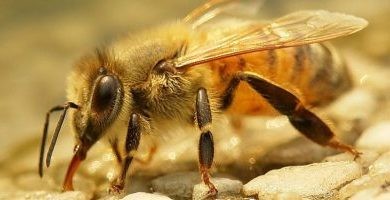Koschevnikov's honey bee
(Apis koschevnikovi)

Description
Apis koschevnikovi, Koschevnikov's honey bee, is a species of honey bee which inhabits Malaysian and Indonesian Borneo, where it lives sympatrically with other honey bee species such as Apis cerana (specifically A. c. nuluensis). The species was first described by Hugo Berthold von Buttel-Reepen, who dedicated it to Grigory Aleksandrovich Kozhevnikov (1866–1933), a pioneer of honey bee morphology. This was an invalid designation, however, and the name was first formally made available by Günther Enderlein that same year. Therefore, Buttel-Reepen is not the author of the name (following the ICZN). The species was described again by Maa in 1953, this time with the name Apis vechti. It was finally rediscovered by Tingek and his colleagues in 1988. A. koschevnikovi is often referred to in the literature as the “red bee of Sabah;” however A. koschevnikovi is pale reddish in Sabah State, Borneo, Malaysia, but a dark, coppery color in the Malay Peninsula and Sumatera, Indonesia. The habitat of A. koschevnikovi is limited to the tropical evergreen forests of the Malay Peninsula, Borneo, and Sumatra. They do not live in tropical evergreen rain forests which extend into Thailand, Myanmar, Cambodia, and Vietnam. This area is associated with a change from wet seasonal evergreen rain forests to mixed moist deciduous forests. Its altitudinal distributions extend from sea level to about 1600 meters. The range for A. koschevnikovi is diminishing because it is now either poorly represented or absent in the several areas where it had been previously located. This has been attributed to habitat changes resulting from deforestation and the establishment of tea, oil palm, rubber, and coconut plantations. Not much is known about the nest structure of Apis koschevnikovi. They live in small colonies making a few combs within small tree cavities in the rain forest. Apis koschevnikovi is of the family Apidae and genus Apis. A. koschevnikovi is known as one of the “Red Bees” of Borneo, described in 1988. A. koschevnikovi appears together with A. cerana and A. mellifera, two other cavity-nesting species, in three separate phylogenic clusters without overlapping. The phylogenetic cluster analysis of A. koschevnikovi is found directly in contact with a cluster of A. cerana and distant from A. mellifera.
Taxonomic tree:







